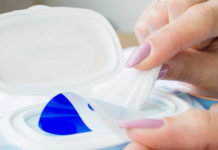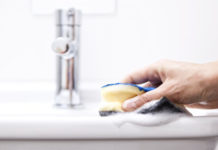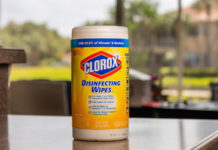Last Updated on June 18, 2020
Afterward, it’s time to move the pieces of clothing to the other container and rinse them thoroughly by using the same gentle movements. Remove the excess of water, lay them flat on a surface, and let them dry naturally.
3. How to wash delicates in the washing machine?
Fortunately, you can safely wash most of your delicates in the washing machine (unless, of course, it is specifically written “dry clean only” or “hand wash only” in the label). But you still need to do it right! Before you put your sensitive clothes in the washing machine, you have to sort them by color and fabric type, and turn them inside out (putting your delicates inside a laundry bag might also be a good idea).
Washing two different types of delicates simultaneously might ruin them both. Select the gentle or delicate wash cycle with cold water at the lowest spin cycle your washing machine offers. You can also opt for a warm wash and cold rinse – if you choose to do so, you need to select a shorter wash cycle. Just like we taught you in the previous point, you have to lay the clothes on a flat surface so they can air dry in their original shape.
Important tips: – Be careful with zippers and other types of closures. If an item gets stuck on these mechanisms during the washing cycle, it will probably get irreversibly damaged. – Delicate bras should always be hand washed to prevent their structure and cushions from being damaged or becoming worn out. – Keep your washing machine in perfect condition.
This means you have to clean it every once in a while by running it empty on a 90º cycle and inspect it carefully to see if there are any loose parts that could damage your clothes.
4. Remove stains ASAP
By as soon as possible, we mean as soon as you notice a stain. The longer you take, the harder it will be to remove the stain from the fabric. Especially considering you shouldn’t use any powerful stain remover. Natural cleaning solutions such as white vinegar, lemon juice, and baking soda are much milder for your delicates and are less likely to ruin them. But it can still happen, so please be very careful! Here’s what you need to do:
Before using any product, try to remove the stain with plain water only. You should use warm water for inorganic stains (such as dirt stains, for example) and cold water for organic stains. Grab an absorbent cloth or paper towels, splash a little water over the stained area, and quickly place the paper towels around the stain.
If all goes well, the paper towels will absorb the stain, and your piece of clothing won’t be damaged. If that procedure doesn’t work, use the natural cleaning solutions aforementioned instead of plain water, let it soak into the stain for a few minutes, and rub it very, very gently. After that, it’s time to hand wash the item as we taught you earlier.












